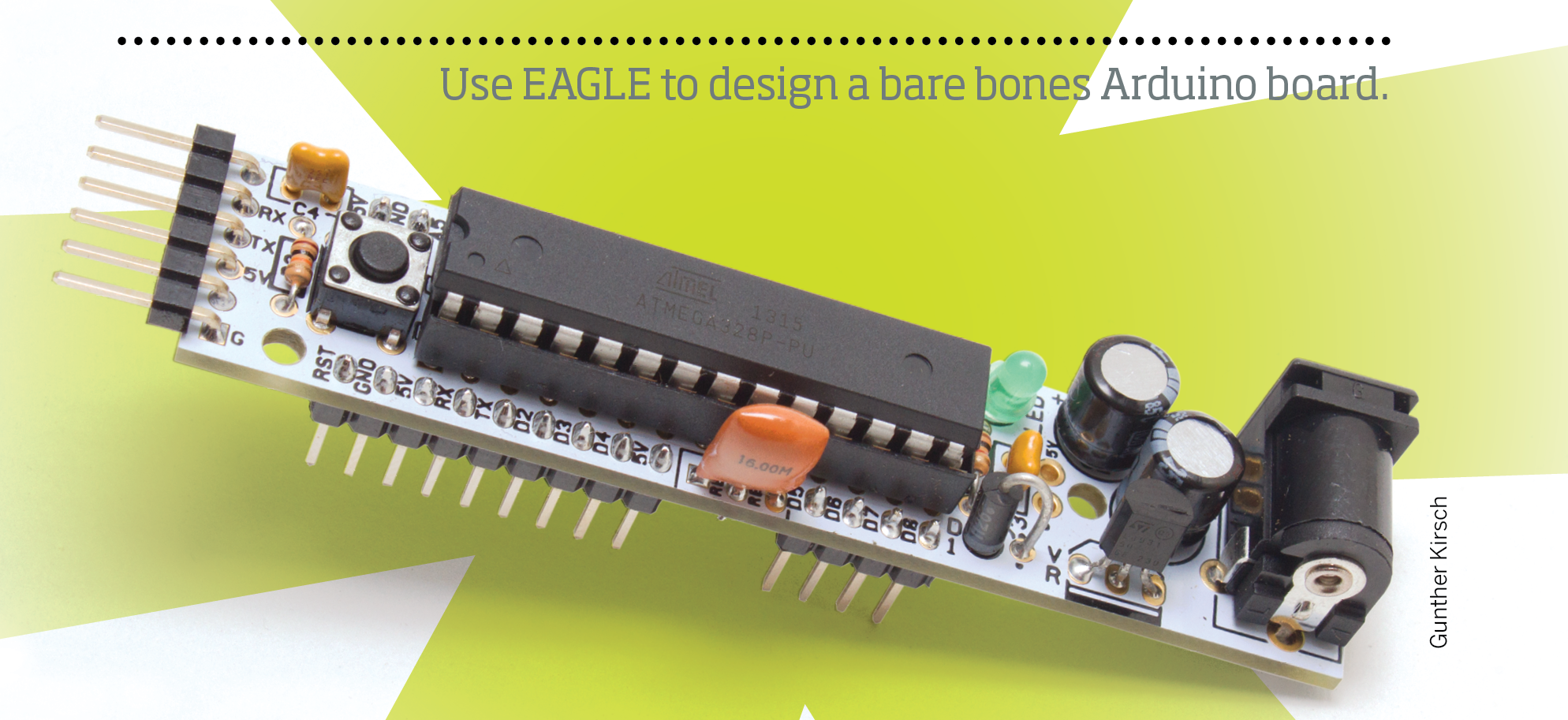
This series of 3 tutorials introduces the use of CadSoft’s popular free-as-in-beer EAGLE PCB design suite. We’re learning the ropes by stepping through the design process for a basic Arduino-type AVR microcontroller development board, specifically the Really Bare Bones Board design by Paul Badger of Modern Device. In Part 1, we showed you how to lay out the schematic and validate it with EAGLE’s built-in Electrical Rule Check. Here we’ll show you how to establish the physical shape of the board and the actual copper pathways that make up the real circuit.
Once your schematic has passed the ERC, you’re ready to start routing the board. EAGLE has a tool that will automatically route all the traces on the board following rules you specify in Design Rule Check (DRC). I won’t get into the argument over autorouters vs. hand routing, except to say that it is a good idea to at least try your hand at manual routing to get the hang of it. That’s what we’ll do here.

























